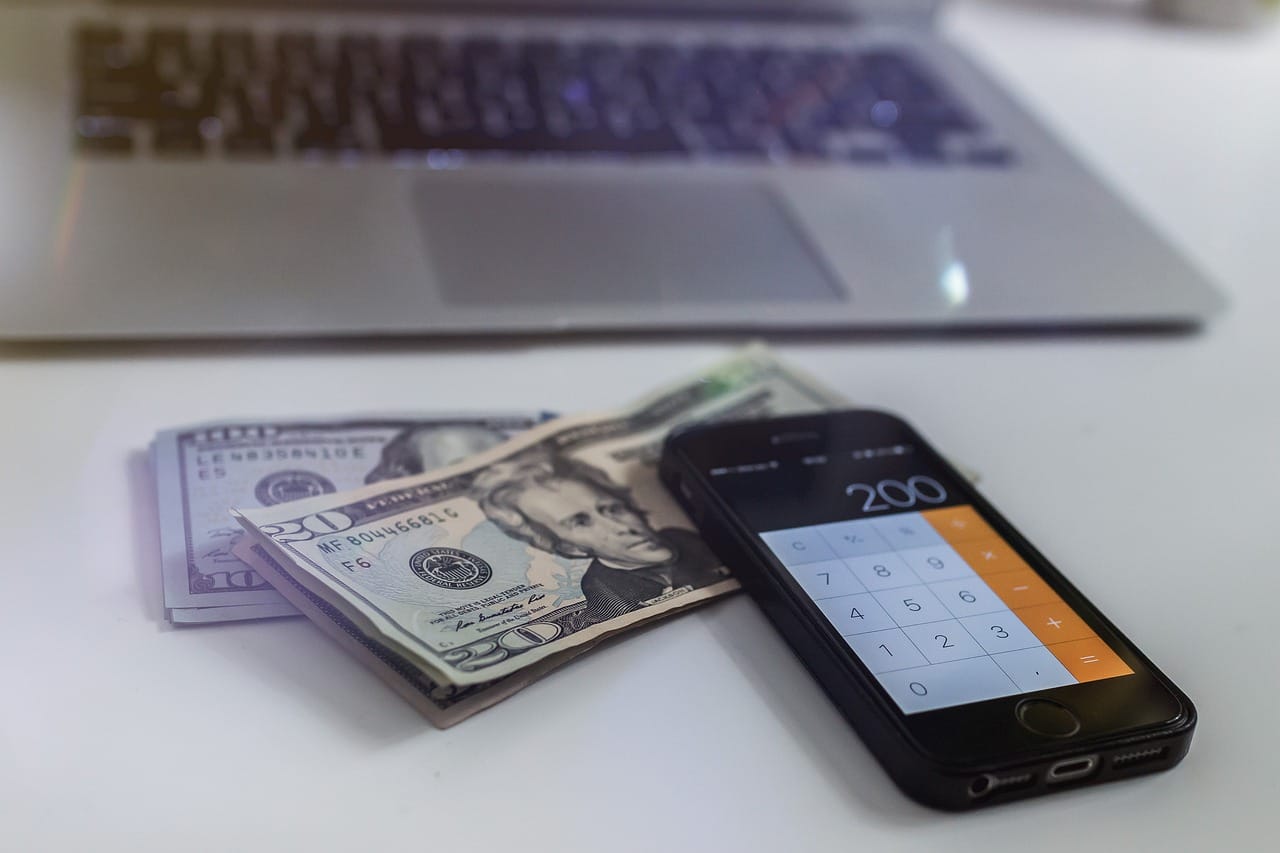9 ways to win tax season as a rideshare driver

This post contains affiliate links that HyreCar may receive a commission for referring you to them.
Do I have to pay taxes on Uber or Lyft earnings?
When you become an Uber driver or Lyft driver, you work as a 1099 independent contractor. You are the boss of your own business, meaning you’re not technically an employee of Uber or Lyft. If you ask yourself, “Do Uber drivers pay taxes?” the answer is yes. Your Uber and Lyft salary is taxed. That’s why it’s important for you to keep track of your annual rideshare income, mileage, and expenses. This way you’ll be ready to report your earnings correctly and declare as many deductions as possible when it’s income tax itime. Keep in mind, the same concept applies if you drive for other on-demand delivery services like Postmates, DoorDash, Instacart, and Shipt as well. Here are our 9 ways to win this tax season.
By the way, your pals at HyreCar are not tax professionals. The following information is some friendly financial advice related to rideshare driver income taxes that we hope you will find helpful. Please consult a tax professional if you have questions about calculating and/or filing your taxes.
Let’s briefly discuss the Lyft and/or Uber driver tax form, or forms, you will be receiving. They are called 1099s, and there are two kinds.
Tax forms
Is there a tax form for Uber drivers?
- Uber and Lyft will send you a 1099-MISC and/or 1099-K form with a detailed accounting of your rideshare driver earnings.
- 1099-K reports the total amount passengers paid you for the rides you gave them.
- 1099-MISC reports other rideshare income you received.
- These forms are automatically sent to the I.R.S. by Uber and Lyft.
- However, because taxes are not withheld from independent contractor earnings by Uber and Lyft, you must report this income to the I.R.S. on a Schedule C 1040 form.
- IMPORTANT TIP: Your rideshare income has to be reported no matter how much or how little you make as a rideshare driver.
- If you’re not sure how to proceed, please provide your Lyft 1099 form and/or Uber 1099 form to an income tax professional.
As an Uber or Lyft driver, you want to keep as much rideshare profits in your pocket as possible. This can be done by declaring business expenses, also known as deductions. So, what is tax deductible for Uber drivers and Lyft drivers? EVERYTHING associated with your rideshare driving business is deductible! Mileage, cell phone and accessories, toll fees, even a first aid kit you keep in your car, are considered rideshare business expenses. These deductions can save you a whole lot of money come tax time. Ok, my friend, buckle up because here…we…go!
First off, here is something that is extremely important to remember. The tax rules for rideshare drivers only allow you to write off either the standard mileage deduction (see formula below) or the expenses you incur that are related to your rideshare business. You can not write off both.
- It’s best to deduct the mileage if you’re a rideshare driver who drives a lot of miles in an economical car with low gas expenses. On the other hand, it makes more sense to deduct vehicle-related expenses if your car costs a lot to operate when it comes to fuel, maintenance, and upkeep. Ask your tax professional to find out which set of deductions is best for you.
1. File your taxes yourself
There is plenty of free and affordable tax filing software out there. Millions of people use online tax return filing because it’s fast, easy, and the software does most of the work for you.
Make sure you enter all of your rideshare profits and expenses properly, no matter what online software program you use.
Of course, some folks do want the expertise and reduction in stress using a tax professional provides when it comes to filing income tax. We recommend not just going for the first tax professional that pops up in a Google search. Ask friends and family for referrals. Look at Yelp reviews. Or better yet, look up an online rideshare driver forum and ask for referrals in your area. You might end up paying an income tax professional a few hundred bucks to prepare your tax return, but that could be worth it if they find you more expenses to deduct than you thought of on your own.
2. Calculate business mileage to use as a deduction
Can Uber drivers write off mileage? How about Lyft drivers? Abso-positively-lutely! All rideshare drivers can.
- As of 2018, 54.5 cents of every mile driven while you’re on the clock as a rideshare driver can be deducted. Here’s a simple formula to help you calculate your mileage deduction. IMPORTANT TIP: You can also add parking fees and tolls you paid while on the job into this equation.
- Let’s say you drove 5,000 business miles and you paid $300 in tolls and parking fees.
- Calculate the mileage deduction like this: 5,000 miles X $.545 (54.5 cents per each mile) = $2,725.
- Now add the $300 in toll road and parking fees to the $2,725. Your grand mileage deduction total is…drumroll please…$3,025! That’s a nice chunk of change, huh?
3. Keep a detailed account of your miles and expenses
Keeping track of mileage for taxes is easy when you use a mileage tracking app. These apps also help you accurately record your rideshare driving expenses as well, saving you a lot of time and stress as April 15th rolls around.
Hurdlr is a great app to help you track mileage to ensure easier tax return filing. Not only does it auto-track mileage and expenses, but it also offers real-time views of earnings and potential tax deductions. Gain insights to real-time profit and loss reports.
It enables you to always know what taxes you owe, and when you owe them, offering peace of mind about finances with little mental effort, so you can focus on other things, like offering the best Uber or Lyft ride to customers. Click HERE to sign up and download Hurdlr on iOS and Android.
You can also download the Gridwise app, where you’ll be able to:
- Effortlessly track all of your rideshare and delivery miles to maximize your tax deduction
- Save time by receiving alerts when passengers are arriving at your local airport and check the queue length from anywhere
- See how your earnings break down across rideshare and delivery services so you know where to focus more of your time on the road
- Compare your earnings to other drivers in your area
- Get alerts about local traffic, weather, and large events going on in your city
- Easily switch between rideshare and delivery apps from anywhere on your phone (Android only)
Drivers who use Gridwise report increased earnings by up to 39% and save thousands on their tax bills.
Everything, and we mean, EVERYTHING, associated with your day-to-day job as a rideshare driver is deductible. Try not to leave anything off the list of expenses you personally paid for that are related to your rideshare driving gig and keep all receipts! Here’s a partial list of self-employed driver tax deductions that we put together for you:
4. Car related expenses
- Auto and rideshare driver insurance. The amount that is deductible varies from state to state. Contact your insurance carrier for deduction information.
- Car registration tags. Again, this varies from state to state.
- Can you Uber and Lyft drivers deduct gas on their taxes? Yes, if you fill up while rideshare driving.
- License and registration fees
- Are car washes tax deductible? When you’re a rideshare driver, yes! So is getting your car detailed to spruce it up on the inside and exterior.
- Did you buy new floor mats for your rideshare driving vehicle? Deduct ‘em!
- Car repairs and scheduled maintenance like oil changes, replacing tires, etc.
- Car tool kits, tire inflators, pressure gauge, emergency flares.
- Can you deduct car payments on taxes? You bet, but only if you’re paying to own or lease a car that you use for rideshare driving. Rent a car for ridesharing from HyreCar and the monthly payments are deductible, as well.
- Car loan interest payments can be deducted.
- Your roadside assistance plan fee, such as a AAA membership, is deductible if the membership covers the car you use for ridesharing.
- Business taxes and licenses
- Toll road transponders
- Battery jumpstart kit
- City and airport fees
TAX CREDIT TIP: You may be eligible for a state and/or federal tax credit If you use a hybrid or electric car for ridesharing. For more information click HERE.
5. Cell phone expenses
The most important thing you need to be a rideshare driver, other than a car (obviously!) is a smartphone. Ride requests, driver and passenger ratings, navigation tools, driver support, rideshare payments, and even tips are all handled through the Uber or Lyft app on your phone. Therefore, there are a ton of rideshare tax deductions related to your smartphone. Here are some suggestions:
- The cost of a new smartphone is 100% deductible if you bought it specifically for ridesharing driving. If you’re using an older phone you already own, you may be able to deduct a percentage of the original cost. Ask your tax professional.
- You can deduct 100% of your mobile plan if you use the phone only for rideshare driving purposes. If you use the phone for personal and rideshare driving purposes you’ll need to calculate the percentage that you use it for business and deduct that amount only.
- Smartphone accessories that are used for your rideshare driving business such as car chargers, cell phone mounts, and Bluetooth headphones are all deductible. Just make sure you have the receipts to verify these purchases
6. Passenger entertainment and comfort
Some drivers like to provide their passengers with certain amenities to make their ride more enjoyable. Keep track of these purchases because you may be able to claim up to a 50% deduction on your tax return. Here are several suggestions:
- Snacks, gum, water bottles, hand sanitizer, Kleenex, and other items that you purchase to offer to your passengers are deductible.
- Do you pay for a satellite radio subscription or a commercial-free streaming music service like Pandora to provide music in your rideshare car? A percentage is deductible!
- First Aid Kits
- Flashlights
- Umbrellas
7. Driver safety
Along with a car phone mount for safe, easy access to your phone while driving, many rideshare drivers invest in other items that keep them and their passengers safe. And since you purchased these items for your rideshare driving business, they are tax deductible. Check with your tax professional for the deduction percentage allowed.
- Dashboard Camera: Also known as a dash cam. What are dash cams for? These devices record the audio and video of what goes on in your car while you’re driving passengers to their destinations. The audio/video can be used later to protect yourself in case you are falsely accused of something by a passenger, or to document what happened if a passenger became unruly, violent, or threatening to you. Buying a dash cam for your rideshare vehicle can be considered a business expense.
8. Make sure you report your rideshare driving net revenue not gross revenue
A big mistake that a lot of rideshare drivers make come tax time is reporting their 1099 Lyft and/or Uber gross income on the I.R.S. Schedule C form instead of their Uber net earnings.
- Uber and Lyft report your gross income to the I.R.S., meaning they report both how much you earned and how much they took out in fees and commissions. This is not the same as your net income, which how much money you actually earned after those fees and commission were subtracted. It’s important to know that your net income is lower than your gross earnings.
- If you only report your gross income, you will be taxed more because the dollar amount is higher than your net income. Also, if you report a different total to the I.R.S. that Uber and Lyft reported, it may be considered a red flag, which could cause a tax audit. You don’t want that.
Avoid this mistake by filling out your 1040 Schedule C correctly when it comes to your Lyft yearly income as well as your Uber income.
- Report your gross earnings, which are listed on the 1099s that Uber and Lyft each sent you, as business income on a 1040 form.
- Then, enter the fees and commissions that Uber and Lyft took out of your gross earnings on Line 10 (Commissions and Fees) of the 1040 form.
- You’ve now officially calculated your net rideshare income, and the amount will match up with what Lyft and Uber sent to the I.R.S. Audit averted!
Don’t Forget to File Your Taxes. People do forget or completely avoid paying taxes because the whole process is stressful and time consuming. This a bad idea because it’s illegal and you’ll have to pay a whole bunch of fees and penalties later.
9. Don’t Forget to File Your Taxes
Sounds silly, but people do forget or completely avoid paying taxes because the whole process is stressful and time-consuming. This a bad idea because it’s illegal and you’ll have to pay a whole bunch of fees and penalties later.
Conclusion
Yes, we know. Getting your taxes done is about as enjoyable as getting a root canal, and that’s no different for Uber and Lyft drivers. Unfortunately, taxes are a part of working. As an independent contractor, you need to make sure your rideshare profits and expenses are tracked, totaled and reported accurately. This is the best way to keep as much of your hard-earned income as possible where it belongs: in your pocket. And remember, if you rent a car for ridesharing from HyreCar, your affordable rental fees are tax-deductible!
To repeat:
HyreCar cannot offer professional tax advice. Please consult a tax professional if you have questions about calculating and/or filing your taxes.
Happy Tax Filing from your pals at HyreCar!
Disclaimer
Actual earnings may differ and depend on factors like number of deliveries completed, time of day, location, and expenses. Hourly pay is calculated using average Dasher payouts while on a delivery (from the time you accept an order until the time you drop it off) over a 90 day period and includes compensation from peak pay, tips, and other incentives.



